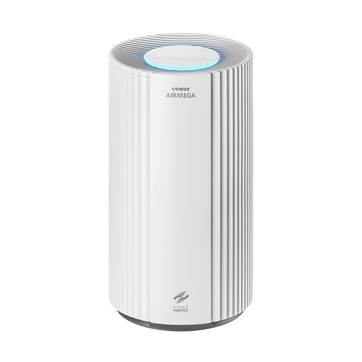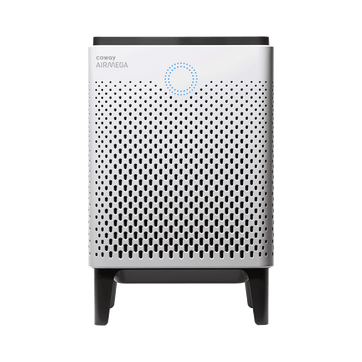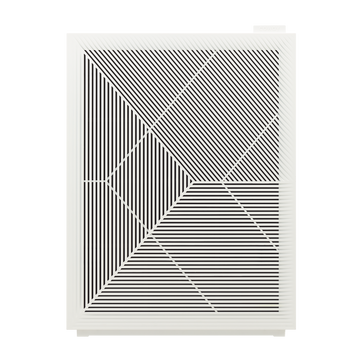
ICYMI: February’s hottest air quality news
Our collective understanding of the effects of air pollution is constantly evolving, as researchers work to identify, quantify, and manage the impact of unclean air. Here are some of February’s top discoveries:
Cabin Conditions
Think the inside of your car is a sanctuary? Think again. A new study says that drivers may be breathing dirtier air than pedestrians: During a two-hour trip, researchers measured air inside and outside of a vehicle every minute, and found that nitrogen dioxide levels were 21 percent higher on average inside the vehicle, the BBC reports.
Fat Cats
Air pollution may cause cognitive delays and blood pressure spikes in humans, but new research indicates that contaminated air may also be linked to obesity. Duke University researchers found that rats exposed to Beijing air for 19 days were 15 percent heavier and had 97 percent higher total cholesterol than rats who breathed filtered air during that time.
New Leader
According to an analysis by Greenpeace India, India’s fine particulate matter levels reached an all-time high last year. At the same time, China’s pollutant readings decreased 17 percent between 2010 and 2015 (thanks, in part, to an “Action Plan” that restricted coal production), compared to India’s 13-percent uptick.
Life Saver
Two degrees Celsius (3.6 Fahrenheit) may not seem like much, but climate scientists say it could be a matter of life and death. According to a Duke University/NASA study, a 40-percent reduction in greenhouse emissions by 2030 would slow the global temperature increase—and consequently prevent 295,000 pollution-related deaths.
Worth a Thousand
Forget sensors, a team of graduate researchers in Singapore are working on an app that would detect air quality by analyzing user-generated photos. By cross-referencing photos with data from nearby air-quality monitors, the app, called AirTick, will learn how to determine air quality from a photo alone.
Learn more about how Airmega is changing the way we breathe, and stay up to date on the latest news by signing up for our newsletter.
Disclaimers
1Coway air purifiers has been proven to trap dust, pollen, dander, viruses and bacteria in the air based on KCL (Korea Conformity Laboratories) testing.They have been tested in a 30㎥ size chamber according to the Korea Air Cleaning Association standard (SPS-KACA 002-132:2022 Modified) to measure the 0.01㎛ size of particle removal rate. It was tested on maximum airflow speed in normal room temperature and humidity conditions. The performance may vary in the actual living environment of customers.
→ Tested with Airmega Aim, 150, 160, AP-1216L, AP-1512HH, AP-1512HHS, 200M, Icon, IconS, 230, 240, 250, 250 Art, 250S, 300, 300S, 400, 400S, ProX
299.97% of viruses, bacteria, fungi and pollen were verified to be removed from the air for Coway air purifiers which have Green True HEPA™ filter applied based on the Japan Food Research Laboratories(JFRL) testing according to JEM 1467 standard.
→ Tested with Coway Airmega AP-1512HH, AP-1512HHS, 250, 250 Art, 250S, 300, 300S, 400, 400S
→ All tested by JFRL and received above result within below time.
All tested by JFRL and received above result within below time.
- Virus: Tested with Escherichia coli phage ΦX174 NBRC 103405, 60 minutes
- Bacteria: Tested with Staphylococcus epidermidis NBRC 12993, 60 minutes
- Fungi/Mold: Tested with Penicillium citrinum NBRC 6352, 60 minutes
- Pollen: Tested with Cedar Pollen extract, 60 minutes
3Aerosol test conducted in a Biosafety level 3 laboratory with two Coway air purifier models, Coway Airmega 250 and 400 for removal of SARS-CoV-2 Aerosol by US based MRI Global, a not-for-profit laboratory and partner of US Department of Defense. The test was conducted in a 13.1ft3 chamber. Virus was aerosolized for 15 minutes and the product was turned on high for 2 minutes. Result showed each product effectively removed over 99.98% of the SARS-CoV-2 in 2 minutes. This is a result from a laboratory experiment condition and result may vary in different conditions. This result does not imply it kills SARS-CoV-2 or prevents the transmission of Covid-19. Coway Airmega 250S and 400S are identical to the tested models and has equal performance with an additional mobile connectivity function.
4The concentration of ammonia, acetaldehyde and acetic acid were proven to be removed within 30 minutes by FCG Research Institute, Inc. Human Life Science Lab. It is not a demonstration result in the actual use space. Not all odors and gases may be supported. → Tested with Coway Airmega 150, 160, AP-1512HH, AP-1512HHS, 400, 400S
5The coverage area of the air purifier is based on an area where the air cleaner can make two air changes per hour (ACPH). An air change per hour translates to how many times an air purifier can clean an area, assuming the height of a ceiling to be 8 ft, in one hour. Therefore ** means two air changes per hour means that the cleaner can clean the area once every 30 minutes and * means air changes per hour means that the air purifier can clean the area once every 60 minutes.
10Terms and conditions apply. Discounts, including promotions, coupons, bundle discount and subscription discount, cannot be stacked on top of other coupons. During promotional periods, discount codes will not be able to be applied to orders. Promo codes may apply to products only—filters, accessories, and new products within 3 months of the release date are not included.




















